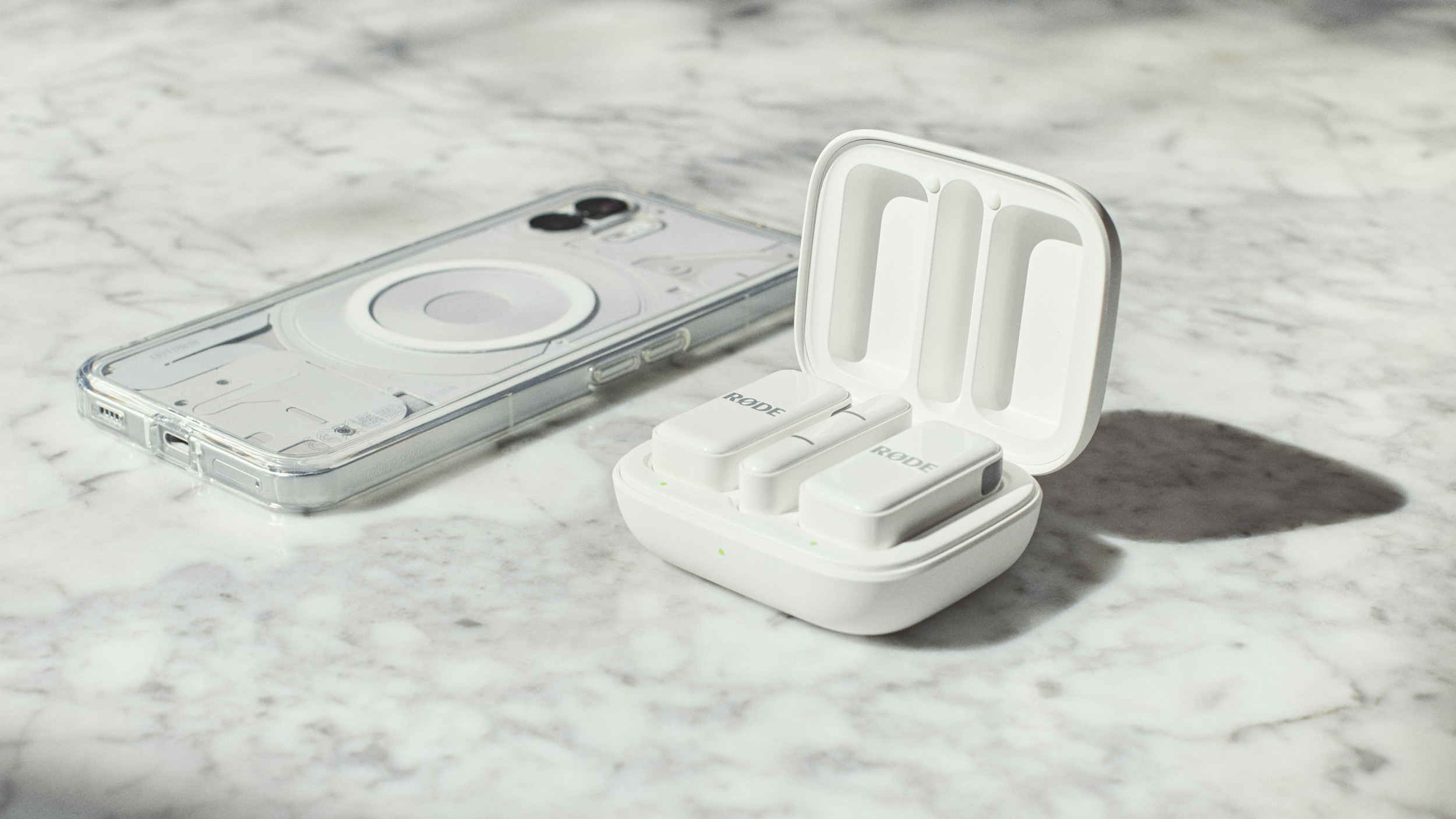Rode’s new Wireless Micro is its smallest wireless mic kit yet, made just for smartphones
Get better audio with Rode's tiny and super-simple wireless mic

- Rode's smallest and lightest-ever mic at just 0.42oz / 12g
- Available in black or white versions and for USB-C or Lightning connection
- Automatically controls audio levels for well-balanced sound
Rode has unveiled its smallest-ever wireless mic system, the Wireless Micro. Designed for smartphone content creation, the Wireless Micro is the audio giant's simplest wireless mic yet, offering next-level audio quality while being cable-free and discreet.
The dual-mic kit includes two mics (otherwise known as transmitters) and one receiver, all of which are stored in a charging case. The entire kit, including the case, weighs just 3.6oz / 102g, with each mic weighing just 0.42oz / 12g and measuring 40 x 20 x 17mm. That's properly tiny.
To get started, you simply plug the (also tiny) receiver into your smartphone's charging port, and it'll sync to the mic(s). Depending on your smartphone, you might first have to manually select the external mic option in your phone camera's video menu (rather than the phone's built-in mic), as was the case for me when using a Pixel phone. Otherwise, that's it – you're up and running in seconds, equipped with Rode's Intelligent GainAssist technology for "perfect audio every time".
The mics can clip onto clothing or attach magnetically, and they're available in black or white. There are USB-C and Lightning versions of the Wireless Micro for full compatibility with both Android and all iPhone models.
Wind shields are built in as part of Rode's patent-pending acoustic chamber design, plus there are additional furry windshields in the box that clip around the receiver for clearer outdoor recording on breezy days, although these additional windshields won't fit into the charging case.
The Wireless Micro's list price is $149. We'll update this article with UK and Australia pricing, as well as an on-sale date, as soon as we get this information from Rode.





The smart choice for smartphone content creators
We've had some hands-on time with the Rode Wireless Micro, and will share our thoughts soon in a full review. What we can say at this stage is that the Wireless Micro is a breeze to use – you can be up and running, and capturing high-quality audio for your smartphone videos in seconds.
Get daily insight, inspiration and deals in your inbox
Sign up for breaking news, reviews, opinion, top tech deals, and more.
The Wireless Micro boasts a transmission range in excess of 100m, and during testing we were able to connect reliably to an Android phone. The operating time for each mic is a generous seven hours, plus you can recharge the mic's battery through the charging case, which features a 490mAh battery, effectively extending the overall operating time to 21 hours. Impressive stuff.
You can record video with the Rode Wireless Micro audio through your phone's camera app, plus it works with the free Rode Capture video recording app, which adds features such as sound-level monitoring. There are pros and cons to working with either of those options, so it's good to have the choice between the two.
A note for audiophiles: the Wireless Micro has a 20Hz to 20kHz frequency range, a maximum 135db SPL, a 73db signal-to-noise ratio and an A-Weighted equivalent noise of 21dBA. Those specs are roughly similar to those of the Rode Wireless ME, a wireless mic that also works with cameras.
Intelligent GainAssist automatically controls audio levels for well-balanced sound, freeing the user to focus on creating. While we'll need to fully assess audio quality in our review, the Wireless Micro looks like a great addition to Rode's range of wireless mics. I can see this being one of Rode's most popular products to date.
You might also like

Tim is the Cameras editor at TechRadar. He has enjoyed more than 15 years in the photo video industry with most of those in the world of tech journalism. During his time as Deputy Technical Editor with Amateur Photographer, as a freelancer and consequently editor at Tech Radar, Tim has developed a deeply technical knowledge and practical experience with cameras, educating others through news, reviews and features. He’s also worked in video production for Studio 44 with clients including Canon, and volunteers his spare time to consult a non-profit, diverse stories team based in Nairobi. Tim is curious, a keen creative, avid footballer and runner, and moderate flat white drinker who has lived in Kenya and believes we have much to enjoy and learn from each other.